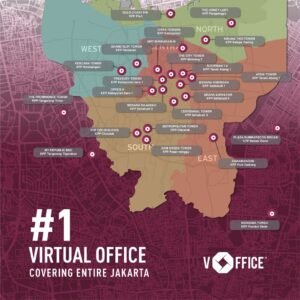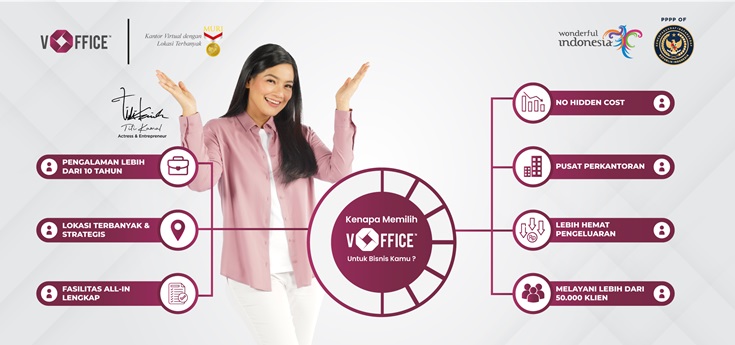What is a Building Construction Permit? Learn the legal basis, purpose, requirements, procedures, and costs of managing an IMB in this article.
What is IMB (Building Construction Permit)?
A Building Construction Permit (IMB) is a permit granted by the local government to an individual or legal entity to construct, modify, expand, reduce, or demolish a building in accordance with applicable regulations. An IMB is required to ensure that the construction is safe, complies with spatial planning, and does not harm the environment or surrounding community.
Also read: 14 Advantages of Renting an Office Compared to Buying
Legal Basis of IMB
The legal basis of the IMB in Indonesia refers to several regulations and laws, including Law Number 28 of 2002 on Building Construction and Government Regulation Number 36 of 2005 on the Implementation of Law Number 28 of 2002. Additionally, each region has specific local regulations (Perda) that govern the process and requirements for managing an IMB.
What is the Purpose of IMB?
The main purpose of the IMB is to regulate and supervise construction to ensure it complies with the established spatial plan. With an IMB, the government can ensure that the buildings constructed are safe for their occupants and the surrounding community. Moreover, the IMB aims to protect the aesthetic value of the environment and ensure sustainable development.
Requirements and Procedures for Managing IMB
Managing an IMB involves several requirements and procedures that applicants must meet. Here are the general steps for managing an IMB:
- Document Preparation: Applicants must prepare various documents, such as copies of ID cards, land certificates, building plan drawings, and other supporting documents.
- Application Submission: Applicants submit their application to the local Investment and One-Stop Integrated Services Office (DPMPTSP).
- Verification and Evaluation: Officers will verify and evaluate the submitted documents.
- Site Survey: A team from DPMPTSP will conduct a site survey to ensure compliance with the spatial plan.
- IMB Issuance: If all requirements are met and the evaluation is passed, the IMB will be issued.
Read Also: What is SIUP (Trading Business License)?
IMB Replaced by PBG
In 2021, the Indonesian government replaced the IMB with the Building Approval (PBG) as part of bureaucratic reforms. The PBG aims to simplify the licensing process and provide better legal certainty for the community and businesses. However, the basic principles and objectives of the PBG remain the same as the IMB.
What are the Costs of Managing an IMB?
The costs of managing an IMB vary depending on the location and type of building. Typically, these costs include administrative fees, survey fees, and retribution fees. For example, for residential buildings, the cost of managing an IMB can range from a few hundred thousand to millions of rupiah. For more specific information, applicants can contact the local DPMPTSP.
The Importance of IMB in Construction
The IMB is crucial in construction as it serves as a control tool to ensure that every building constructed meets safety and feasibility standards. Without an IMB, construction can become disorganized and potentially harm the environment and surrounding community.
What are the Penalties for Not Managing an IMB?
Failure to manage an IMB can result in various penalties, such as administrative fines, demolition of the building, and even criminal sanctions. These penalties aim to create a deterrent effect and ensure that every construction project complies with the applicable regulations.
Differences Between IMB and PBG
Although IMB and PBG serve similar functions, there are some key differences between them. The IMB focuses more on the permit to construct a building, while the PBG focuses more on the technical approval of building construction. The PBG is expected to provide a simpler and faster process compared to the IMB.
Also read: What is PBG: A Comprehensive Guide for Beginners
Tips for Managing an IMB Quickly and Accurately
Managing an IMB can be a complex process if not well prepared. Here are some tips for managing an IMB quickly and accurately:
- Complete Documents: Ensure all required documents are complete and meet the requirements.
- Consult with Experts: Consider consulting with experts or consultants experienced in the construction field to get advice and input on your plans.
- Follow Procedures: Follow each procedural step carefully and ensure no stages are skipped.
- Contact DPMPTSP: Do not hesitate to contact the local DPMPTSP if there are questions or unclear aspects in the IMB management process.
Conclusion
Managing an IMB is an important step in any construction process. With an IMB, you can ensure that the constructed building meets the applicable safety and spatial standards. Although the IMB has been replaced with the PBG, the basic principles and objectives remain the same. Therefore, it is important to understand the requirements and procedures for managing an IMB or PBG to ensure a smooth and safe construction process.










